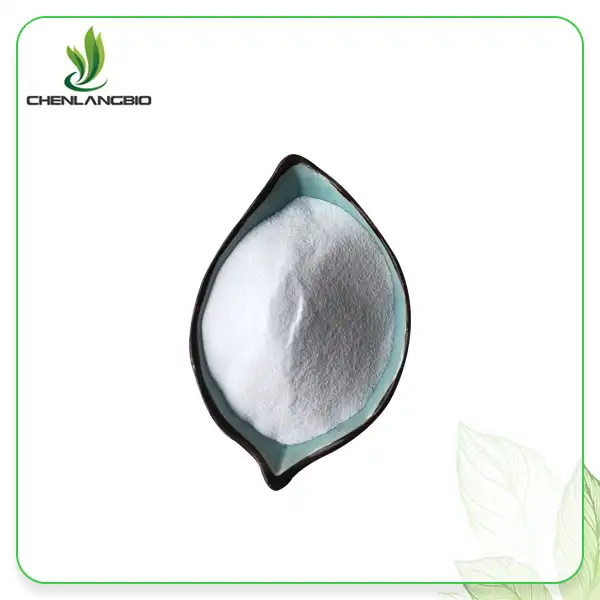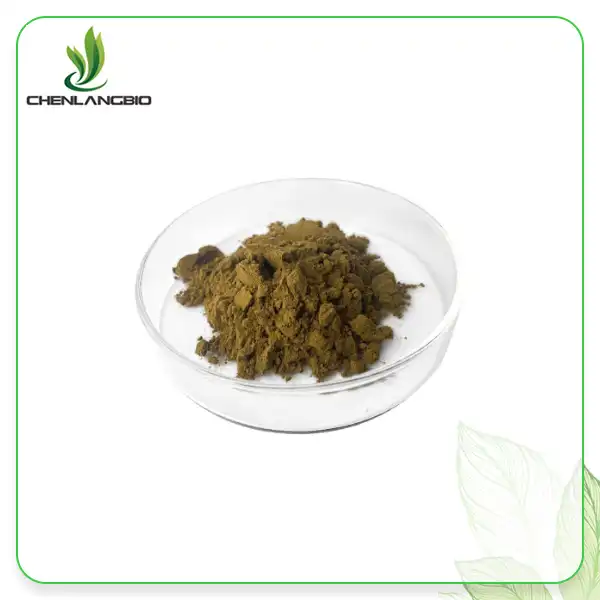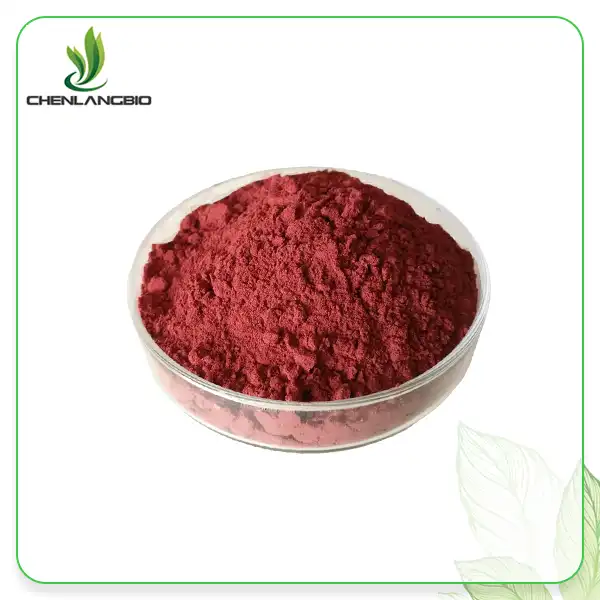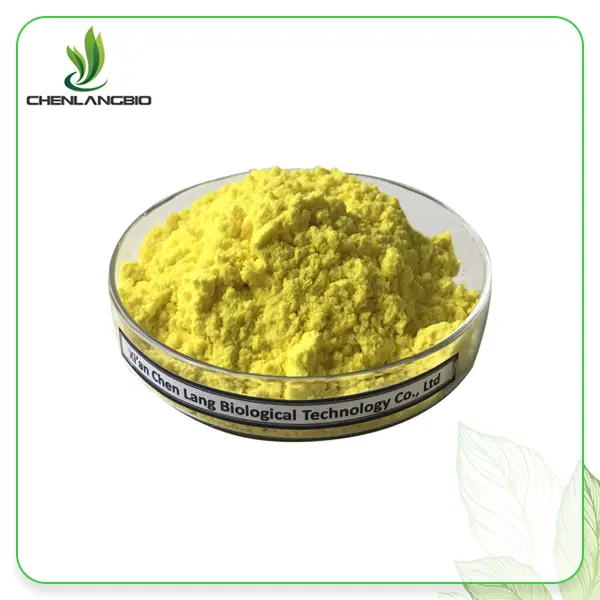What Is Bifida Ferment Lysate?
2025-11-25 13:36:47
Introduction
Bifida ferment lysate has become one of the most talked-about skincare ingredients in recent years, especially as consumer interest shifts toward barrier repair, microbiome balance, and gentle solutions for sensitive or compromised skin. Although many people recognize the term from high-end serums and “repair essence” products, few truly understand what makes this postbiotic ingredient so effective—or why so many global brands rely on it for their flagship formulas.
What sets it apart is the way it interacts with the skin’s natural biology. It doesn’t act like a traditional botanical extract or a simple moisturizer. Instead, it supports the skin on a deeper, more cellular level: reinforcing barrier proteins, calming irritation, enhancing DNA repair, and helping the skin recover from environmental stress. This is why products containing this ingredient often feel more soothing, more strengthening, and more restorative than standard skincare formulas.
For manufacturers, formulators, and buyers, understanding what bifida ferment lysate actually is—and how it is produced through advanced fermentation and lysate technology—is essential. It reveals why this ingredient has such strong clinical results, how it delivers benefits for sensitive skin, and what makes it a reliable choice in modern skincare formulations.
What Is Bifida Ferment Lysate?
It is a postbiotic skincare ingredient produced through the fermentation and controlled lysing of Bifidobacterium—a beneficial microorganism widely used in microbiome research. Unlike probiotics, which contain live bacteria, or prebiotics, which serve as “food” for microbes, bifida ferment lysate contains the bioactive metabolites, peptides, polysaccharides, nucleic acids, and cell fragments that result from the fermentation-and-lysis process. These compounds deliver targeted benefits to the skin, making this ingredient one of the most advanced tools for skin barrier repair, sensitive-skin support, and post-treatment recovery.
In the skincare industry, Bifida Ferment Lysate is classified as a postbiotic, which has become a major trend driven by its superior stability, safety, and compatibility compared with traditional probiotic skincare. While probiotics often struggle in formulations due to temperature and preservative sensitivity, postbiotics such as Bifida Ferment Lysate remain stable across a wide range of pH and product bases, making them ideal for modern serums, emulsions, and repair essences.
Because of this stability and strong clinical relevance, many global brands incorporate Bifida Ferment Lysate into formulations targeting:
♦sensitive skin repair
♦skin microbiome balance
♦anti-aging benefits
♦UV-induced damage recovery
♦post-procedure soothing
♦skin barrier strengthening
How Bifida Ferment Lysate Is Made?
To understand why it delivers such unique and highly targeted skincare benefits, it helps to look closely at how bifida ferment lysate is made. The production method is rooted in advanced microbiome science and modern biotechnology, combining fermentation, controlled cell lysis, and postbiotic extraction to obtain a rich blend of bioactive compounds suitable for sensitive-skin and barrier-repair formulations.
The bifida ferment lysate fermentation process begins with carefully selected strains of Bifidobacterium, a genus of beneficial microorganisms widely recognized for its role in gut and skin microbiome health. These strains are cultivated in a nutrient-rich, controlled fermentation environment, where temperature, pH, oxygen levels, and nutrient availability are precisely managed. During fermentation, the bacteria produce a diverse range of metabolites—short-chain fatty acids, peptides, amino acids, and organic acids—that will later become key components of the final postbiotic ingredient.
Once fermentation reaches peak bioactivity, the culture undergoes a lysate extraction phase. This is where the cell walls of the bacteria are intentionally broken down using mechanical disruption, enzymatic hydrolysis, or high-pressure homogenization. This step releases intracellular components—nucleotides, peptides, polysaccharides, and functional cell-wall fragments—creating what the industry refers to as the “lysate.” This process transforms the culture from a living system into a stable, safe, and highly effective postbiotic skincare ingredient.
The resulting mixture is then filtered, purified, and sometimes concentrated or freeze-dried to produce a stable, cosmetically elegant raw material. Unlike probiotic skincare formulas, which rely on “live bacteria,” Bifida Ferment Lysate microbiome technology focuses on using the beneficial components of bacteria without the challenges associated with preserving viability. This makes Bifida Ferment Lysate significantly more stable through formulation, storage, transportation, and shelf life—an important advantage for brands developing global skincare products.
This combination of fermentation and lysate technology is what gives Bifida Ferment Lysate its multifunctional profile. Because it contains both extracellular metabolites and intracellular fragments, it can influence multiple skin pathways simultaneously—hydration, inflammation, barrier repair, DNA protection, and microbiome balance. These advantages help explain why this postbiotic is a feature ingredient in many of today’s high-performance serums and repair essences.
Bifida Ferment Lysate Benefits for Skin Barrier Health and Sensitive Skin Repair
Among all postbiotic ingredients used in modern skincare, Bifida Ferment Lysate stands out for its remarkable ability to strengthen the skin barrier and calm irritation—two of the most important needs for sensitive, dry, or compromised skin. Much of its effectiveness comes from its unique composition of peptides, polysaccharides, nucleotides, and fermentation metabolites, which work together to support the skin’s natural structure and defense systems.
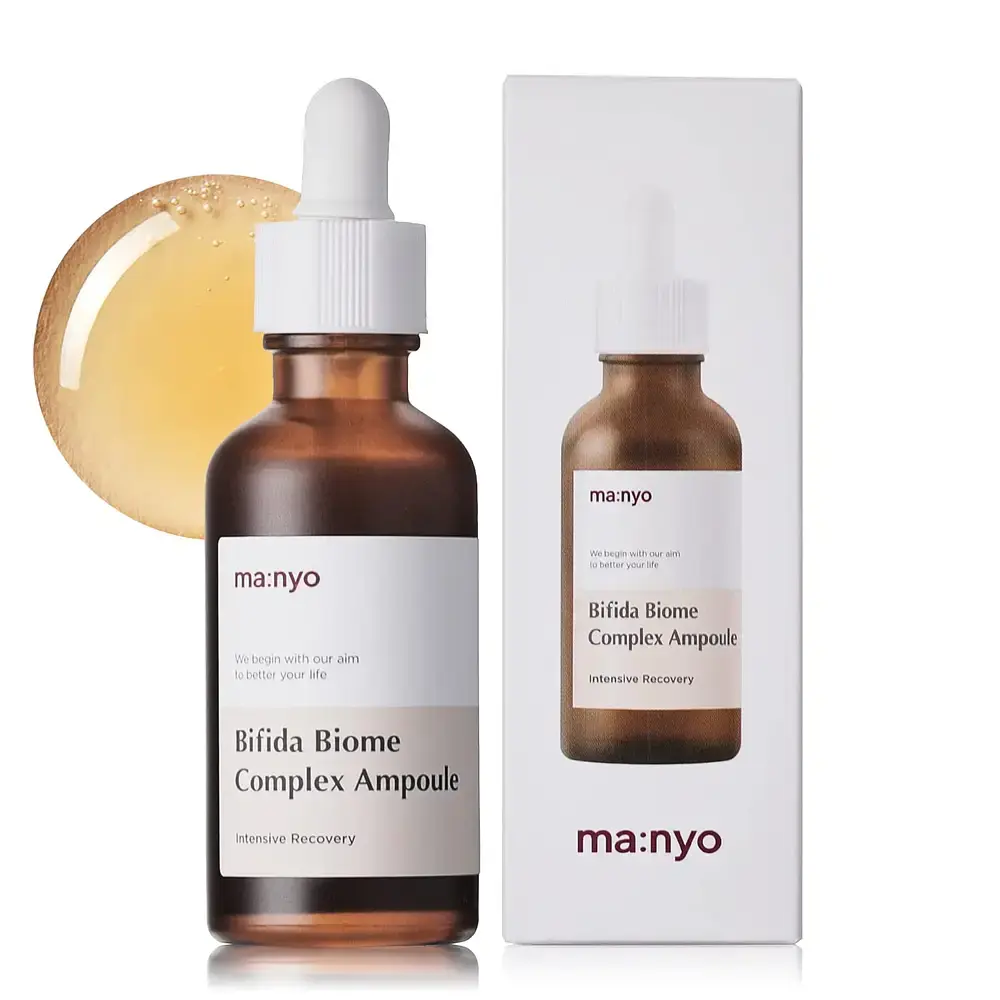
One of the most widely recognized Bifida Ferment Lysate benefits is its ability to reduce transepidermal water loss (TEWL), a key marker of barrier disruption. By supporting the production of filaggrin, ceramide-related pathways, and tight-junction proteins, this postbiotic improves the skin’s ability to retain moisture and protect itself from everyday environmental stress. This is why many dermatologists and formulators consider Bifida Ferment Lysate skin barrier repair to be one of the most reliable functions of the ingredient—especially for users dealing with dryness, over-exfoliation, or external irritants.
In addition to strengthening the physical barrier, Bifida Ferment Lysate for sensitive skin acts on the inflammatory cycle. Various fragments released during the lysate process—particularly peptides and cell-wall components—have demonstrated the ability to modulate inflammatory signals such as IL-6 and TNF-α. The result is a visible reduction in redness, discomfort, and reactivity. For consumers with naturally sensitive skin, this calming effect is often felt within days of use, which explains why many high-end repair essences highlight this ingredient as their star component.
Another crucial benefit is the ingredient’s ability to enhance the skin’s resilience against environmental aggressors. Urban pollution, UV exposure, temperature fluctuations, and lifestyle stressors all weaken the skin barrier and trigger irritation or fine-line formation. The postbiotic skincare benefits associated with Bifida Ferment Lysate help reinforce the skin’s natural defenses, making it more tolerant and less reactive over time.
Because of this broad functionality—hydration, soothing, repair, and resilience—Bifida Ferment Lysate has become a staple in premium skincare formulas targeting sensitive-skin repair, post-treatment recovery, and barrier-focused routines. These qualities not only differentiate it from traditional botanical extracts but also make it one of the most valuable ingredients for brands looking to stand out in the fast-growing sensitive-skin and microbiome-care categories.
How Bifida Ferment Lysate Supports DNA Repair, Anti-Aging & UV Damage Recovery
One of the most compelling scientific advantages of Bifida Ferment Lysate is its ability to enhance the skin’s natural DNA-repair response. This function is particularly important because UV exposure, pollution, and oxidative stress don’t just irritate the skin—they damage cellular DNA, weaken structural proteins, and accelerate the visible signs of aging. As a result, the ingredient has gained strong recognition among formulators for its role in Bifida Ferment Lysate DNA repair and photodamage recovery.
At the molecular level, certain peptides and nucleotides released during the lysate process act as biological “signals” that help the skin recognize and repair UV-induced DNA lesions more efficiently. These bioactive fragments support key repair pathways that restore the integrity of keratinocyte and fibroblast DNA. This is why many high-end serums enriched with Bifida Ferment Lysate are marketed for “environmental repair” or “urban anti-aging”—they target the underlying cellular stress that accelerates wrinkles, uneven texture, and dullness.
The ingredient’s impact on anti-aging goes far beyond wrinkle appearance alone. By reducing inflammation, strengthening the skin barrier, and promoting more stable cellular turnover, Bifida Ferment Lysate anti-aging benefits often include improvements in skin smoothness, elasticity, and overall resilience. These effects are backed by both clinical evaluations and in vitro studies showing better skin tolerance and higher resistance to environmental aggressors.
In formulas designed for UV repair, Bifida Ferment Lysate works synergistically with antioxidants such as niacinamide, vitamin C derivatives, and resveratrol. While antioxidants neutralize free radicals generated by UV radiation, the lysate supports the deeper biological recovery process—helping the skin rebuild itself more efficiently. For this reason, it is frequently included in after-sun treatments, post-exfoliation serums, and recovery essences aimed at reducing long-term photodamage.
The ability to influence both inflammatory and DNA-repair pathways makes Bifida Ferment Lysate a standout postbiotic anti-aging ingredient. It offers multi-level protection—from calming irritated skin to supporting the cellular machinery responsible for maintaining youthful structure. For brands developing anti-aging or photo-repair lines, incorporating this ingredient allows them to offer consumers a scientifically grounded solution rather than a surface-level cosmetic claim.
Bifida Ferment Lysate Mechanisms: Microbiome Balance, Anti-Inflammation & Barrier Strengthening
The effectiveness of bifida ferment lysate can be traced back to its multi-pathway biological activity—an interplay of microbiome modulation, anti-inflammatory signaling, and barrier-repair enhancement. These overlapping functions explain why the ingredient consistently performs well in sensitive-skin formulas, recovery essences, and microbiome-focused skincare lines. Understanding the underlying Bifida Ferment Lysate mechanisms helps formulators design products that deliver results backed by both science and consumer experience.
1. Supporting Skin Microbiome Balance
The skin’s microbiome—the diverse community of beneficial bacteria on the skin’s surface—plays a central role in maintaining barrier integrity, pH balance, immunity, and resilience against irritation. Unlike probiotics, which require live bacteria and are difficult to stabilize in cosmetic formulas, postbiotics such as Bifida Ferment Lysate microbiome extracts deliver the benefits of microbial metabolites without the challenges of keeping cells alive.
Certain peptides, polysaccharides, and lysate fragments act as nutrient sources and signaling molecules that help beneficial skin microbes thrive while discouraging harmful ones. This contributes to a more stable and resilient microbiome, especially in individuals whose barrier function has been compromised by over-exfoliation, pollution, UV exposure, or harsh skincare products.
2. Anti-Inflammatory Signaling & Soothing Effects
One of the most clinically relevant functions of the ingredient is its ability to calm inflammation. Studies show that bifida ferment lysate anti-inflammatory pathways influence the release of pro-inflammatory cytokines such as IL-6 and TNF-α, helping reduce redness, stinging, and thermal discomfort. These soothing effects are particularly valuable for sensitive skin, rosacea-prone users, and individuals undergoing post-procedure recovery after laser, microneedling, or chemical treatments.
In addition, the ingredient helps regulate the skin’s innate immune responses, allowing the skin to react less aggressively to environmental triggers. This translates into a visible decrease in irritation and a more even, comfortable complexion—something consumers often notice within just a few days of consistent use.
3. Strengthening the Skin Barrier from Within
The skin barrier is supported by a network of lipids, proteins, and tight-junction structures that keep moisture in and irritants out. Bifida Ferment Lysate influences several components of this defense system. As part of its postbiotic mechanisms for skin, it supports the synthesis of filaggrin and other structural proteins essential for maintaining a healthy stratum corneum.

Additionally, lysate fragments stimulate the production of natural moisturizing factors (NMFs), improving hydration and reducing transepidermal water loss (TEWL). The result is stronger barrier integrity, better moisture retention, and increased resilience against external stressors such as pollution and UV exposure.
A Synergistic Effect That Sets Bifida Apart
Because Bifida Ferment Lysate works simultaneously across microbiome balance, inflammatory control, and barrier repair, its impact is more comprehensive than many single-function skincare ingredients. This synergy is why it has become a cornerstone ingredient in high-performance repair essences and barrier-focused skincare routines worldwide.
Bifida Ferment Lysate Applications in Skincare Formulations (Serums, Creams, Masks & More)
Thanks to its stability, safety, and proven efficacy, bifida ferment lysate is used across a wide range of skincare formulations—from daily moisturizers to concentrated repair serums. Its compatibility with different textures, pH ranges, and ingredient systems allows formulators considerable flexibility, making it one of the most versatile postbiotics in the modern cosmetic industry.
1. High-Performance Repair Serums
The most common and impactful application is in Bifida Ferment Lysate serum products. Serums allow for higher concentrations of the lysate, typically between 5–10%, and deliver it directly to the skin with minimal interference. This makes serums an ideal format for:
•Barrier repair
•Sensitive-skin recovery
•Daily defense against environmental stress
•Post-procedure replenishment
The lightweight texture of serums also helps support efficient absorption of the lysate’s bioactive molecules.
2. Barrier-Strengthening Creams and Moisturizers
In creams and emulsions, Bifida Ferment Lysate in skincare works synergistically with lipids such as ceramides, cholesterol, and fatty acids. These combinations reinforce both structural repair and deep moisturization. Brands often use the ingredient in moisturizers targeting:
♦Dryness and dehydration
♦Compromised barrier function
♦Redness-prone or reactive skin
♦Anti-aging hydration routines
The lysate enhances the skin’s natural moisturizing factor (NMF), making moisturizers richer and more restorative.
3. Sheet Masks and Leave-On Treatments
Due to its soothing and anti-inflammatory properties, Bifida Ferment Lysate is widely used in sheet masks, ampoules, and overnight leave-on treatments. These formats allow extended contact with the skin, making them especially effective for:
♦Post-sun exposure
♦Post-exfoliation recovery
♦Redness reduction
♦Cooling and calming treatments
Formulators value its ability to deliver both immediate soothing effects and long-term repair.
4. Post-Procedure Skincare & Dermatology-Inspired Products
Professional skincare brands often choose Bifida Ferment Lysate formulations for post-laser, microneedling, and peel-recovery lines. Its ability to support DNA repair, reduce inflammation, and restore barrier proteins makes it ideal for accelerated healing without irritation. Dermatology clinics frequently prefer postbiotic ingredients over plant extracts due to their lower risk of sensitivity reactions.
5. Microbiome-Balancing Products
As the microbiome trend continues to grow, Bifida Ferment Lysate applications extend into products positioned for microbiome health and skin resilience. These include:
♦Balancing toners
♦Gentle essences
♦Prebiotic/postbiotic complexes
♦Anti-stress skincare lines
The ingredient fits naturally within “clean,” “minimal,” or “sensitive-skin-friendly” brand philosophies.
6. Premium Anti-Aging & Repair Essences
Many luxury skincare brands rely on a combination of Bifida Ferment Lysate, hyaluronic acid, peptides, and antioxidants to create signature repair essences. These formulas target:
♦Fine lines
♦Loss of elasticity
♦Photoaging
♦Dullness and fatigue
The lysate’s ability to enhance DNA repair makes it especially valuable in the anti-aging category.
Why Choose CHEN LANG BIO TECH as Your Bifida Ferment Lysate Supplier
As global demand for microbiome-focused and barrier-repair skincare continues to grow, choosing a reliable bifida ferment lysate supplier becomes essential for brands that prioritize consistency, safety, and scientific credibility. At XI AN CHEN LANG BIO TECH, we specialize in supplying high-quality cosmetic actives to manufacturers and private-label brands worldwide, with a strong focus on postbiotic and fermentation-based ingredients.
High-Purity Bifida Ferment Lysate for Premium Skincare Formulations
Our bulk bifida ferment lysate is produced using controlled fermentation and precision lysate extraction to preserve the highest concentration of bioactive fractions—peptides, nucleotides, polysaccharides, and fermentation metabolites. Each batch undergoes strict quality control and HPLC-based analysis to ensure purity, stability, and uniformity, making it suitable for high-end repair serums, microbiome essences, and sensitive-skin formulations.
Full Documentation for Global Compliance
We understand the documentation requirements of global cosmetic industries. This is why every batch is supported by:
♦COA (HPLC)
♦MSDS
♦TDS
♦Microbiological & heavy-metal testing
♦ISO, Halal, Kosher documentation
♦Allergen-free, Non-GMO statements
♦Ingredient safety assessments (for EU and UK markets)
This level of documentation helps manufacturers reduce regulatory risks and streamline market entry for multiple regions, including North America, Europe, Southeast Asia, the Middle East, and LATAM.
Stable Inventory & Fast Global Delivery
Unlike many smaller suppliers, CHEN LANG BIO TECH maintains steady inventory levels to support wholesale bifida ferment lysate orders of varying sizes—from small pilot runs to full-scale production. With efficient logistics partners, we ensure fast shipping timelines and dependable delivery for contract manufacturers and skincare brands worldwide.
Conclusion: Why Bifida Ferment Lysate Is Becoming a Cornerstone Ingredient in Modern Skincare
As the skincare industry continues shifting toward microbiome science and barrier-focused formulations, bifida ferment lysate has emerged as one of the most versatile and reliable postbiotic ingredients available today. Its ability to strengthen the skin barrier, calm inflammation, support DNA-repair pathways, and improve resilience makes it uniquely positioned for sensitive-skin and recovery-driven formulas. Unlike many traditional botanical extracts, this ingredient works at a deeper biological level—reinforcing the skin’s natural repair mechanisms rather than simply masking surface symptoms.
For formulators and global skincare brands, the appeal lies not only in its clinical relevance but also in its formulation flexibility. From high-performance serums to microbiome-balancing creams and soothing post-treatment products, Bifida Ferment Lysate integrates seamlessly into a wide variety of applications. Its stability, safety, and compatibility allow brands to create modern, science-backed products that meet rising consumer expectations for efficacy, transparency, and gentle performance.
As consumer demand grows for ingredients that genuinely improve skin health rather than provide temporary cosmetic changes, bifida ferment lysate stands out as a long-term, future-proof choice. Whether your brand focuses on anti-aging, sensitive skin, or post-procedure care, incorporating this ingredient offers a meaningful way to elevate your formulas and deliver results that customers can feel and see.
Whether you are developing a barrier-repair serum, a sensitive-skin recovery cream, or a microbiome-focused skincare line, sourcing high-quality bifida ferment lysate is essential for achieving stable, high-performing formulas. At XI AN CHEN LANG BIO TECH CO., LTD, we supply premium-grade postbiotic raw materials backed by full documentation, reliable batch consistency, and technical support for global OEM/ODM manufacturers.
💬 Ready to request samples, pricing, or bulk supply?
Contact our team:
📩 Email: admin@chenlangbio.com
📱 WhatsApp: +86-17782478823
Send Inquiry
Related Industry Knowledge
- How Long Does Finasteride Take to Work?
- Top 5 Reasons Sellers Choose 5HTP Powder for Their Business
- Can Genistein Be Used in Skincare Products?
- Are There Any Considerations Regarding the Purity of D-Luciferin Sodium Salt?
- Can l Use Ectoin and Retinol Together
- Lupinus Albus Extract: Health Benefits and Uses
- What Does Magnesium Ascorbyl Phosphate 10% Do
- Alpha Arbutin Powder for Skin Whitening
- High Quality Troxerutin Powder for Skin
- Dimethylmethoxy Chromanyl Palmitate For Skin


